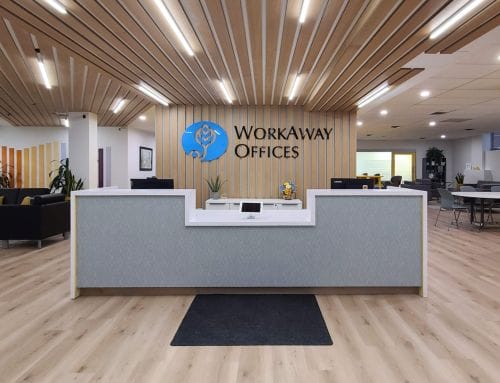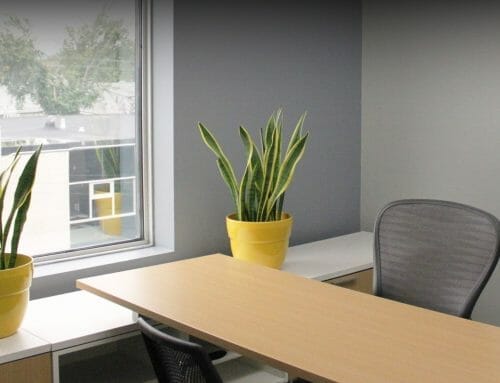Continuous Self-Improvement
You are a business owner who has invested a tremendous amount of time and effort into ensuring your success. You’ve reinvested your profits back into your business in order to establish streamlined processes, develop a leading edge website and you have reached the pinnacle of success, when all of a sudden a new competitor comes into town claiming to have developed a better mousetrap.
To make matters worse, you are surprised, if not shocked, when a few of your best clients call you to say that they’ve decided to move their business to the new competitor in town. “Sorry, we really have enjoyed doing business with you but XYZ Company has offered us these extra benefits that we just can’t pass up.” Ouch…that hurts!
Change, or Get Out of the Way
I’ve been on the bad end of these types of telephone calls and it can be very upsetting to hear that clients are leaving you for another firm. How you react to these situations is key. Is your business going to end up suffering a slow and painful death, or will this new reality spark you into re-engineering your business so you can compete and stay on top?
Will and Vision
In their book titled Will and Vision, the authors Gerard Tellis and Peter Golder describe how the Gillette Safety Razor company’s need for relentless innovation saved the company from near collapse when a competitor introduced a better shaving blade.
In 1962, Wilkinson Sword introduced a stainless steel blade that lasted three times longer that Gillette’s carbon steel blade. Consumers around the world rushed to buy the Wilkinson blade and Gillette’s market fell by 20 percent due to Wilkinson’s entry to the market. Soon after Wilkinson’s entry, other competitors saw the advantage of stainless steel blades and entered the market as well. Gillette’s market then fell by 50% in a little over one year. Gillette’s management was shaken.
Prior to Wilkinson’s entry to the market, Gillette had considered developing a stainless steel blade but had not done so for three strategic reasons. First, it would render its existing manufacturing process obsolete. Second, the materials to produce stainless steel were twice as expensive and lastly, if the stainless blades lasted three times longer, it would reduce the frequency of consumer purchases. So in their view, it did not make sense to develop a costlier technology to yield lower profits. That was until a competitor came into the picture.
Relentless Innovation
Gillette’s sales continued to plummet, and then finally the company used the Wilkinson experience to galvanize Gillette’s management into innovation, even at the cost of cannibalizing its own established products. Since that time, a key theme in the Gillette organization has been to compete against themselves through relentless innovation and cannibalization of their own established products.
Lesson to Learn
If you are losing business to competitors, you must take an honest look at your business practices and services. Then analyze what the root cause of any deficiency is, and engage your clients by having an open and frank discussion to find out exactly what they expect from you. Ask them what additional services they would welcome, and be prepared to hear things you may not have wanted to hear. In order to stay competitive you will have to determine what you must do to keep current and progressive, so that you keep what you’ve built, and continue to prosper.
Once you are confident knowing exactly what you need to do, then you’d be wise to create a Business Plan, which will help you analyze the best approaches to take. For example, should you build it, buy it (buy another company to expand), or get out (while your company still has value)?
If you think there is nothing you can do to improve, you are not thinking of the full picture. Be creative, talk to other successful colleagues, and engage all resources you can think of. There will be work ahead to improve your company, but if you have a plan to succeed, you can accomplish anything you put your mind to.
Continuous Self-Improvement
You are a business owner who has invested a tremendous amount of time and effort into ensuring your success. You’ve reinvested your profits back into your business in order to establish streamlined processes, develop a leading edge website and you have reached the pinnacle of success, when all of a sudden a new competitor comes into town claiming to have developed a better mousetrap.
To make matters worse, you are surprised, if not shocked, when a few of your best clients call you to say that they’ve decided to move their business to the new competitor in town. “Sorry, we really have enjoyed doing business with you but XYZ Company has offered us these extra benefits that we just can’t pass up.” Ouch…that hurts!
Change, or Get Out of the Way
I’ve been on the bad end of these types of telephone calls and it can be very upsetting to hear that clients are leaving you for another firm. How you react to these situations is key. Is your business going to end up suffering a slow and painful death, or will this new reality spark you into re-engineering your business so you can compete and stay on top?
Will and Vision
In their book titled Will and Vision, the authors Gerard Tellis and Peter Golder describe how the Gillette Safety Razor company’s need for relentless innovation saved the company from near collapse when a competitor introduced a better shaving blade.
In 1962, Wilkinson Sword introduced a stainless steel blade that lasted three times longer that Gillette’s carbon steel blade. Consumers around the world rushed to buy the Wilkinson blade and Gillette’s market fell by 20 percent due to Wilkinson’s entry to the market. Soon after Wilkinson’s entry, other competitors saw the advantage of stainless steel blades and entered the market as well. Gillette’s market then fell by 50% in a little over one year. Gillette’s management was shaken.
Prior to Wilkinson’s entry to the market, Gillette had considered developing a stainless steel blade but had not done so for three strategic reasons. First, it would render its existing manufacturing process obsolete. Second, the materials to produce stainless steel were twice as expensive and lastly, if the stainless blades lasted three times longer, it would reduce the frequency of consumer purchases. So in their view, it did not make sense to develop a costlier technology to yield lower profits. That was until a competitor came into the picture.
Relentless Innovation
Gillette’s sales continued to plummet, and then finally the company used the Wilkinson experience to galvanize Gillette’s management into innovation, even at the cost of cannibalizing its own established products. Since that time, a key theme in the Gillette organization has been to compete against themselves through relentless innovation and cannibalization of their own established products.
Lesson to Learn
If you are losing business to competitors, you must take an honest look at your business practices and services. Then analyze what the root cause of any deficiency is, and engage your clients by having an open and frank discussion to find out exactly what they expect from you. Ask them what additional services they would welcome, and be prepared to hear things you may not have wanted to hear. In order to stay competitive you will have to determine what you must do to keep current and progressive, so that you keep what you’ve built, and continue to prosper.
Once you are confident knowing exactly what you need to do, then you’d be wise to create a Business Plan, which will help you analyze the best approaches to take. For example, should you build it, buy it (buy another company to expand), or get out (while your company still has value)?
If you think there is nothing you can do to improve, you are not thinking of the full picture. Be creative, talk to other successful colleagues, and engage all resources you can think of. There will be work ahead to improve your company, but if you have a plan to succeed, you can accomplish anything you put your mind to.




